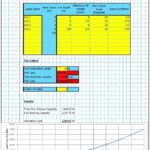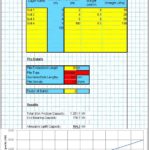This spreadsheet allows the user to estimate the ultimate load capacity of a pile using data obtained from basic geotechnical information. These methods are included in British Standard BS 8004 and the required design information can often be obtained from general site investigation info.
The spreadsheet includes three types of methodology, the Alpha Method, the Beta Method and the Lambda Method. The Alpha Method uses the undrained shear strength of cohesive soils, the Beta Method uses the soil friction angle of cohesionless soils, and the Lambda Method is a variation of the Beta Method typically used in the offshore industry for very long piles in undersea cohesive soils.
The spreadsheet includes a total of 12 different methodologies including both driven and drilled piles and uplift capacity. The full list of spreadsheets is given below;
- Alpha Method (Cohesive Soils) - Drilled Piles
- Alpha Method (Cohesive Soils) - Drilled Piles (Uplift)
- Alpha Method (Cohesive Soils) - Driven Piles
- Alpha Method (Cohesive Soils) - Driven Piles (Uplift)
- Beta Method (Cohesionless Soils)
- Beta Method (Cohesionless Soils) - Meyerhof
- Beta Method (Cohesionless Soils) - Janbu
- Beta Method (Cohesive Soils) - Janbu
- Beta Method (Cohesionless Soils) - Vesic
- Beta Method (Cohesive Soils) - Vesic
- Beta Method (Cohesionless Soils) - Uplift
- Lambda Method (Cohesive Soils) - Driven Piles
Pile Capacity from Geotechnical Info
Enter your email address below for a free trial version of this spreadsheet.













